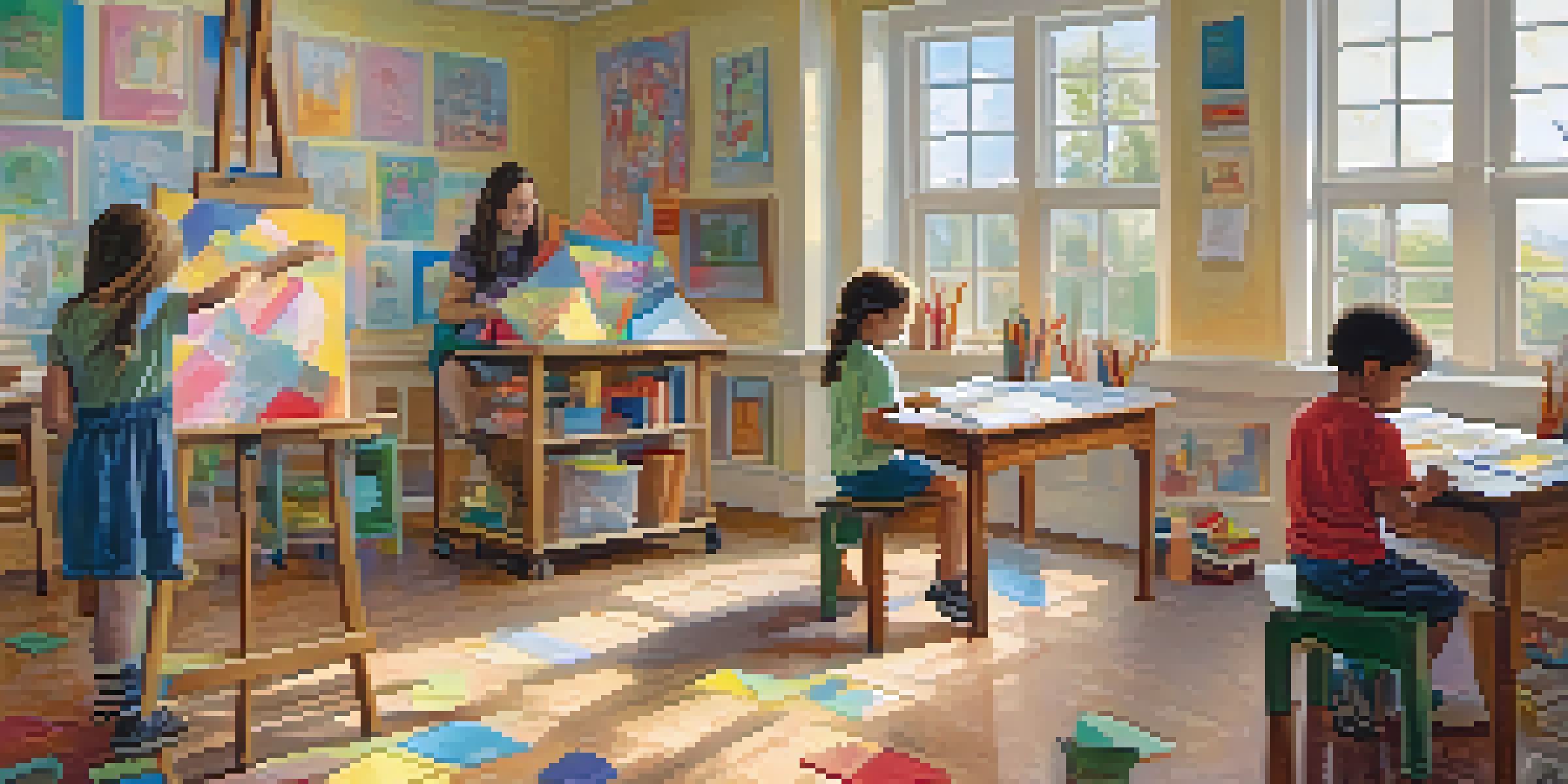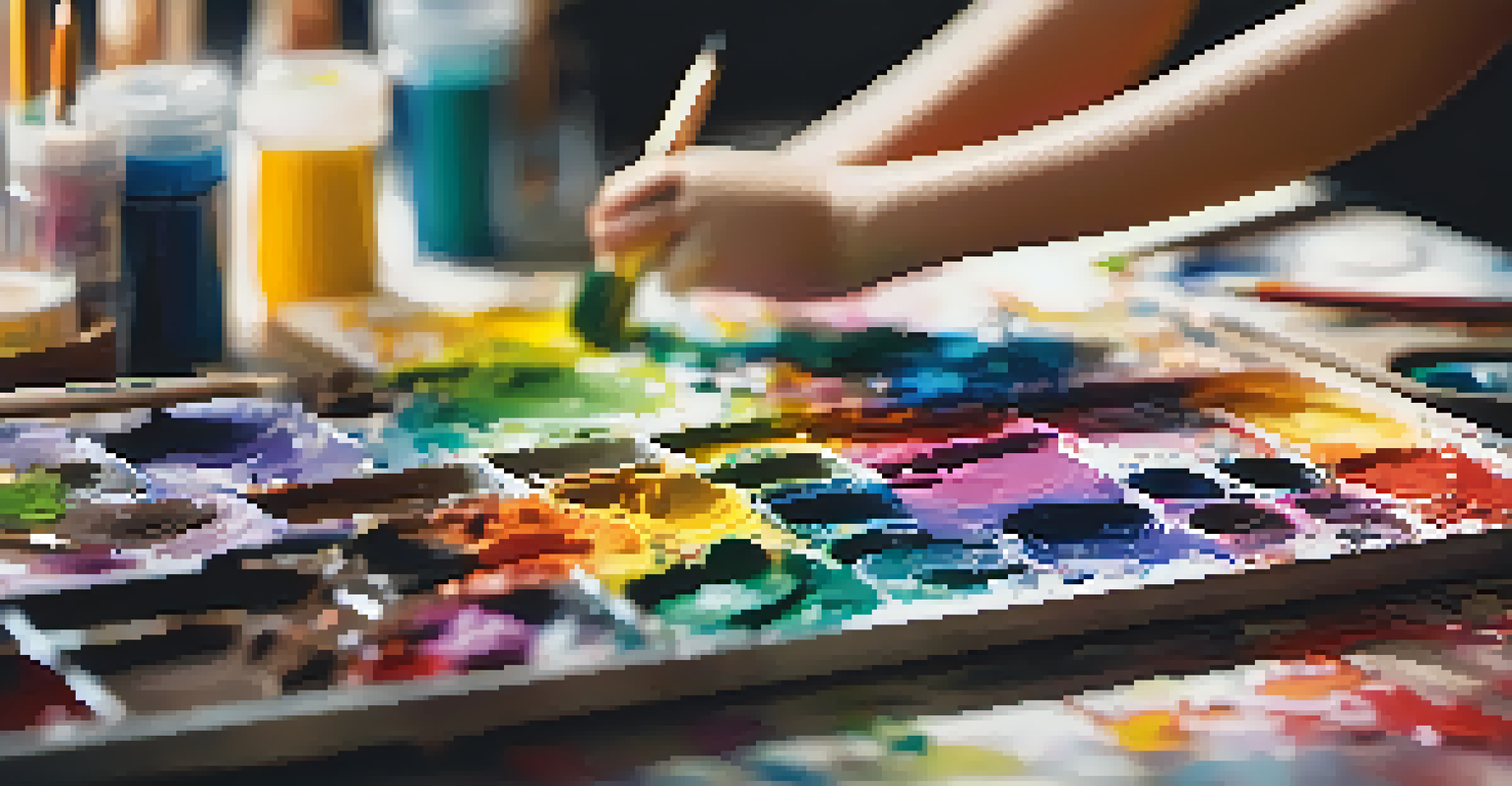The Interplay Between Cognitive Development and Creativity

Understanding Cognitive Development in Children
Cognitive development refers to how children think, explore, and figure things out. This process is crucial as it lays the groundwork for how they learn and interact with the world. For example, during early childhood, kids develop skills like memory and problem-solving, which directly influence their ability to create and innovate.
Creativity is intelligence having fun.
As children grow, they progress through stages of cognitive development, as highlighted by theorists like Jean Piaget. At each stage, their way of thinking evolves, allowing for more complex ideas and concepts. This evolving thought process not only enhances their understanding of the world but also sparks their creative potential.
In essence, cognitive development provides the tools necessary for creativity. When children learn to think critically and abstractly, they open doors to imaginative possibilities, leading to innovative ideas and solutions.
The Role of Creativity in Cognitive Growth
Creativity is not just a byproduct of cognitive development; it's an essential ingredient in the learning process. Engaging in creative activities allows children to express themselves and explore new ideas, which in turn enhances their cognitive skills. For instance, drawing or storytelling encourages them to think outside the box and approach problems from different angles.

When children participate in creative play, they often practice skills like decision-making and emotional intelligence. These activities stimulate their brains in unique ways, promoting neural connections that are vital for cognitive development. This interplay between creativity and cognitive growth creates a richer learning environment.
Cognitive Growth Fuels Creativity
Cognitive development provides essential tools that enhance children's creativity and innovative thinking.
Moreover, fostering creativity in educational settings can lead to better problem-solving abilities. When children are encouraged to think creatively, they become more adaptable and innovative thinkers, ready to tackle challenges head-on.
How Environment Influences Cognitive Development and Creativity
The environment plays a crucial role in shaping both cognitive development and creativity. A stimulating environment, filled with diverse experiences and opportunities for exploration, can enhance a child's cognitive abilities. Imagine a child who has access to art supplies, books, and nature; such resources can ignite their imagination and promote learning.
Play is the highest form of research.
Conversely, a restrictive environment may stifle creativity and cognitive growth. Children who are limited in their experiences may struggle to develop critical thinking skills and innovative ideas. Therefore, it's essential for parents and educators to create spaces that encourage exploration and creativity.
Ultimately, an enriched environment fosters a symbiotic relationship between cognitive development and creativity. The more a child engages with their surroundings, the more their cognitive abilities and creative skills flourish.
The Impact of Play on Cognitive and Creative Development
Play is a fundamental aspect of childhood that significantly influences both cognitive development and creativity. Through play, children learn to navigate social situations, solve problems, and express their emotions. For instance, when children engage in role-playing games, they develop empathy and critical thinking skills, which are essential for both cognitive growth and creative expression.
Moreover, unstructured play allows children to explore their imagination freely. It encourages them to invent stories, build structures, and experiment with different scenarios. This freedom not only nurtures creativity but also promotes cognitive flexibility, enabling them to adapt their thinking to new challenges.
Environment Shapes Learning
A stimulating environment rich in resources fosters both cognitive development and creativity in children.
In summary, play serves as a vital bridge connecting cognitive development and creativity. By providing opportunities for exploration and imagination, play helps children develop essential skills that benefit their overall growth.
The Importance of Encouraging Creative Thinking
Encouraging creative thinking in children is more important than ever in today's fast-paced world. As we face complex challenges, the ability to think creatively becomes a valuable asset. Schools and parents alike can foster this skill by encouraging children to question norms, brainstorm solutions, and express their ideas.
For example, allowing children to engage in open-ended projects can stimulate their creativity. When they are given the freedom to explore their interests without rigid guidelines, they are more likely to come up with innovative ideas. This kind of encouragement not only boosts their creativity but also enhances their cognitive skills, preparing them for future challenges.
Furthermore, teaching children that failure is a part of the creative process can build resilience and adaptability. When they learn to view setbacks as opportunities for growth, they become more confident in their abilities to think critically and creatively.
The Connection Between Cognitive Skills and Artistic Expression
Artistic expression is a powerful manifestation of creativity that often relies on strong cognitive skills. When children engage in activities like painting, music, or dance, they utilize various cognitive functions such as memory, attention, and visual-spatial skills. For instance, learning to play an instrument requires both creative expression and cognitive processing.
Moreover, artistic endeavors can enhance problem-solving abilities. When children encounter challenges in their creative work, they learn to think critically about how to overcome obstacles. This process not only improves their artistic skills but also strengthens their overall cognitive development.
Play Enhances Development Skills
Play is crucial for children as it nurtures their cognitive and creative skills through exploration and imagination.
In essence, the arts provide a unique platform where cognitive skills and creativity intersect. This connection can lead to a deeper understanding of both subjects and enrich a child's overall development.
Future Implications: Nurturing Creativity for Lifelong Learning
As we look to the future, the interplay between cognitive development and creativity will continue to be vital in nurturing lifelong learners. In an ever-changing world, adaptability and innovative thinking are essential skills. By prioritizing creativity in education, we can equip children with the tools they need to thrive.
Educational systems that embrace creative learning environments will not only enhance cognitive skills but also foster a culture of innovation. Schools that promote project-based learning, collaborative problem-solving, and creative exploration can help students develop a love for learning that lasts a lifetime.

Ultimately, nurturing creativity alongside cognitive development can lead to a more resilient and adaptable generation. By recognizing this interplay and promoting both aspects, we prepare children to face future challenges with confidence and creativity.